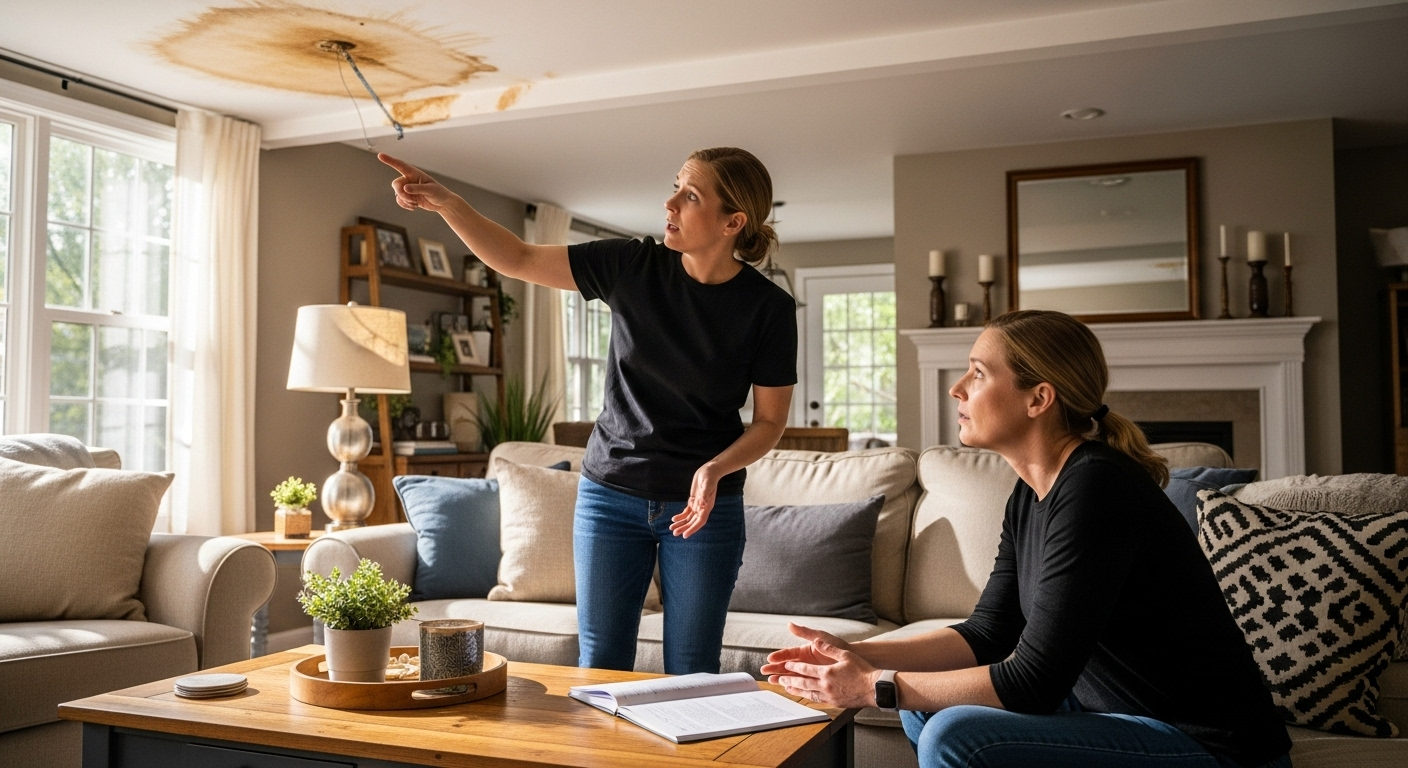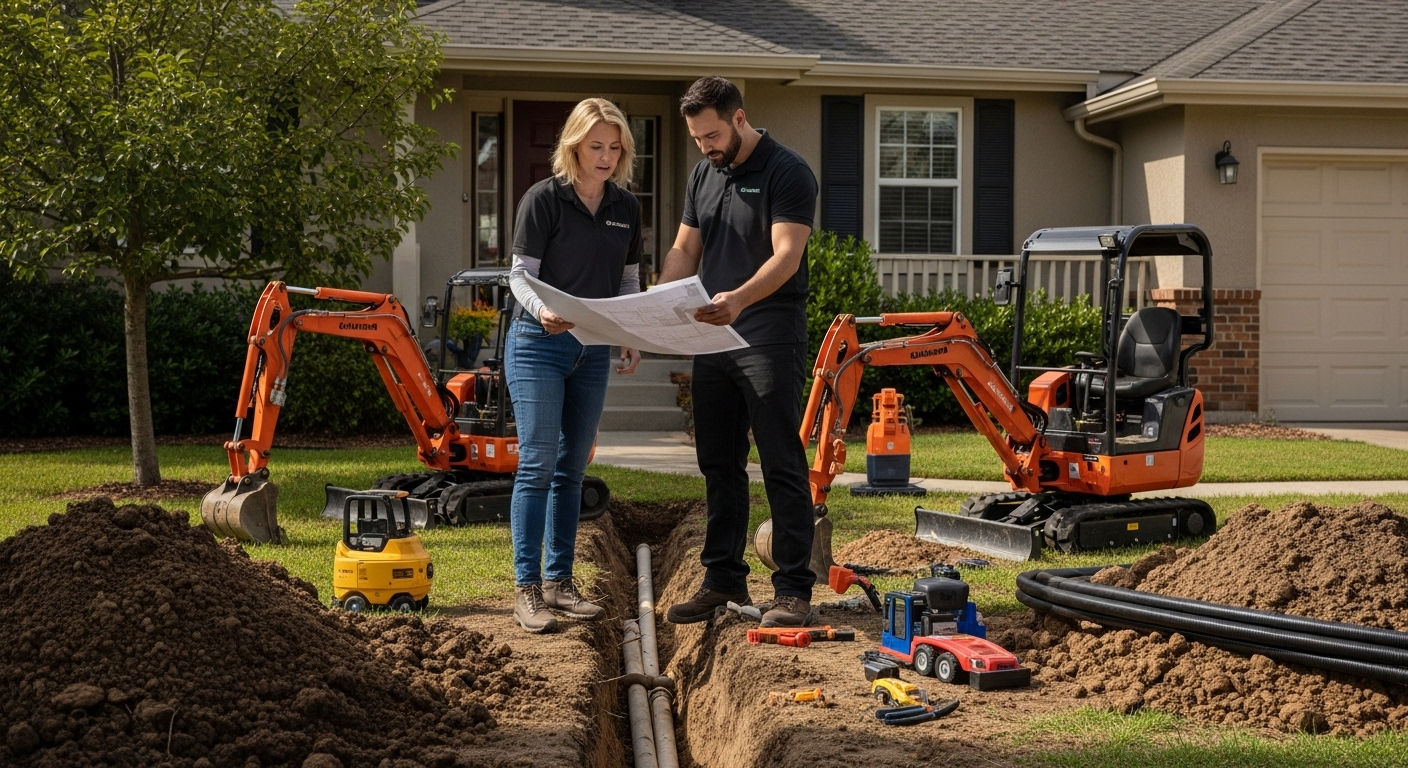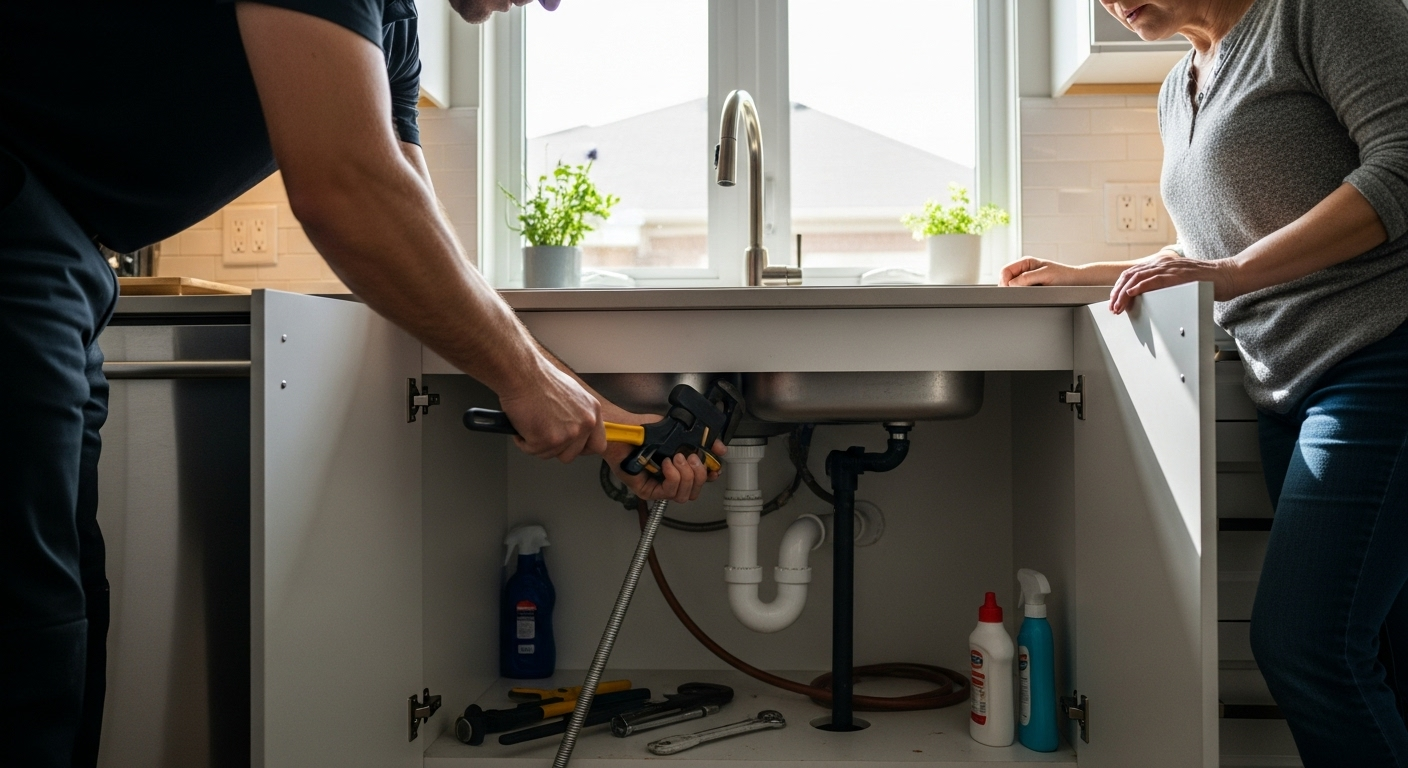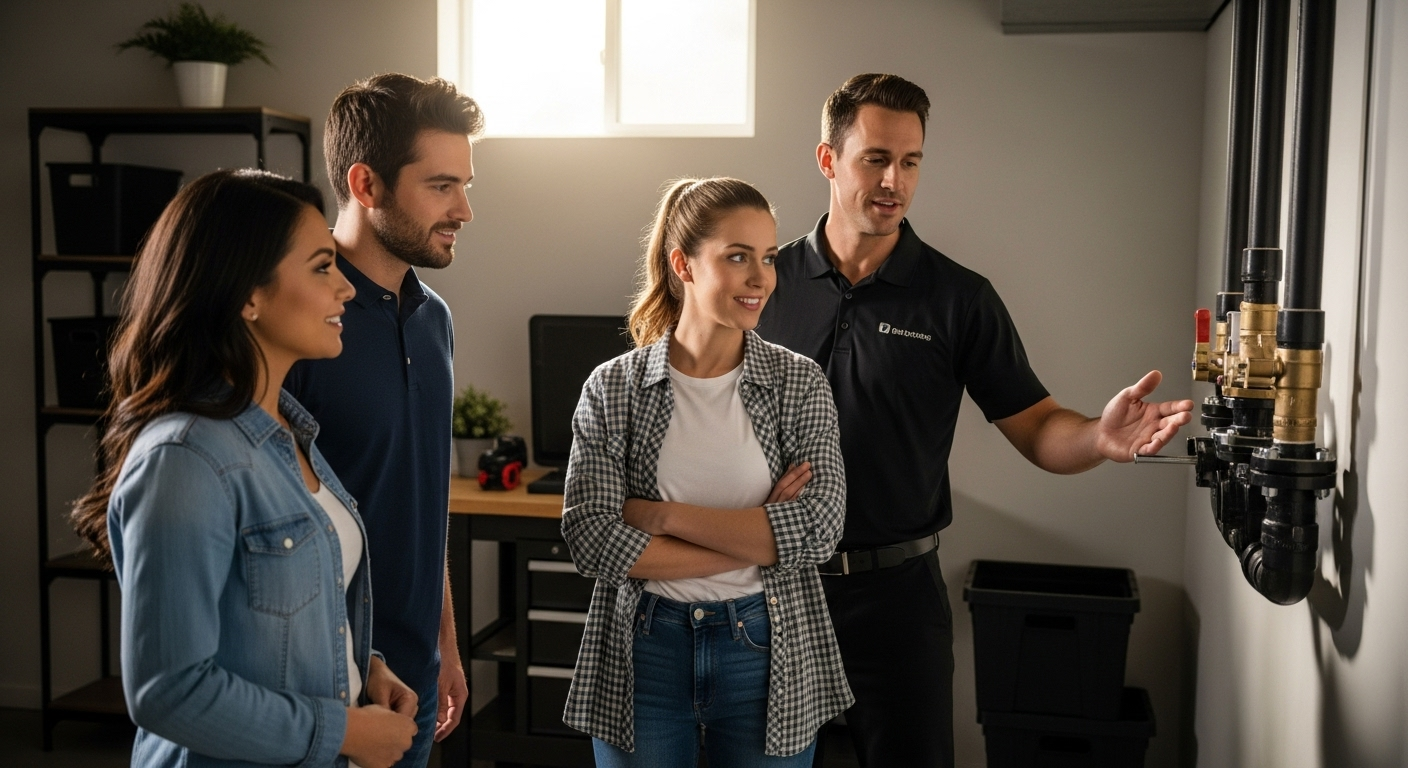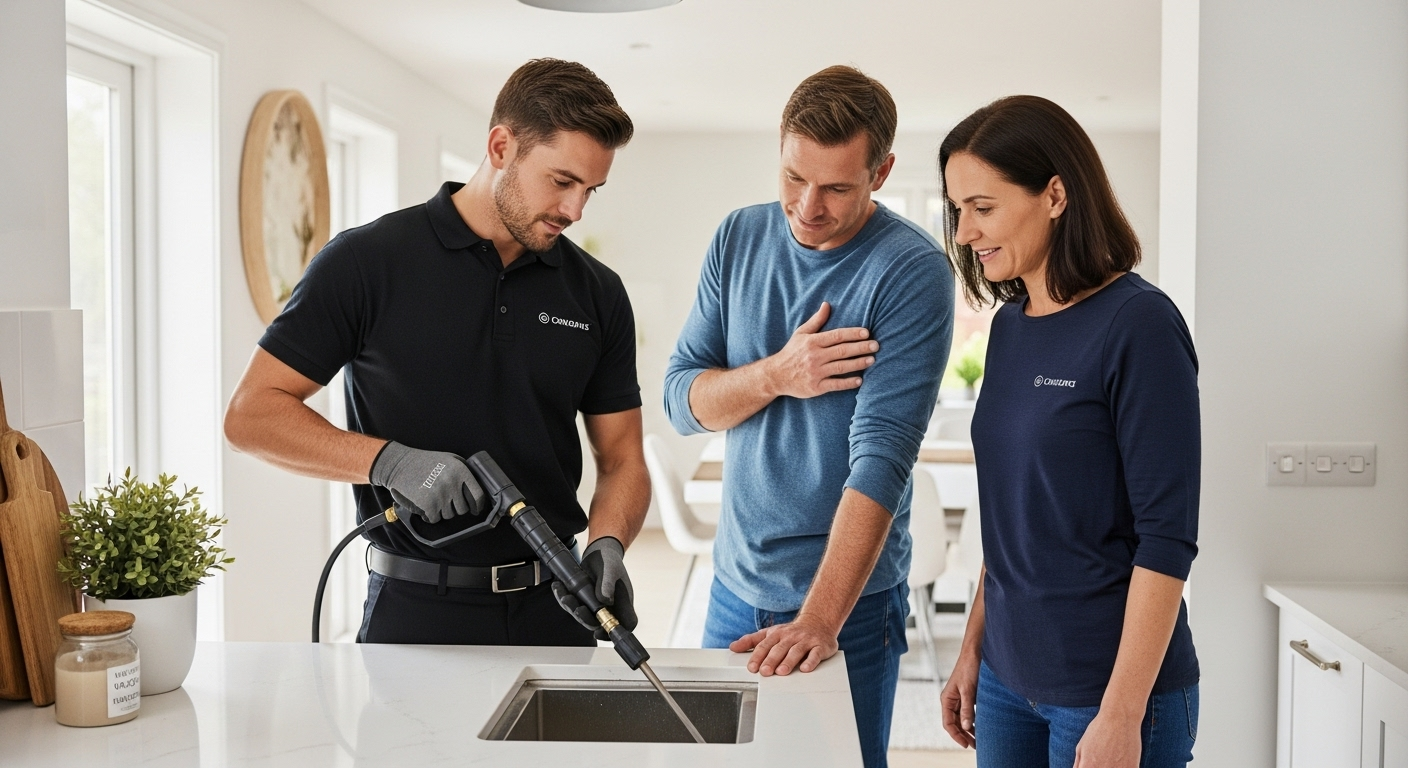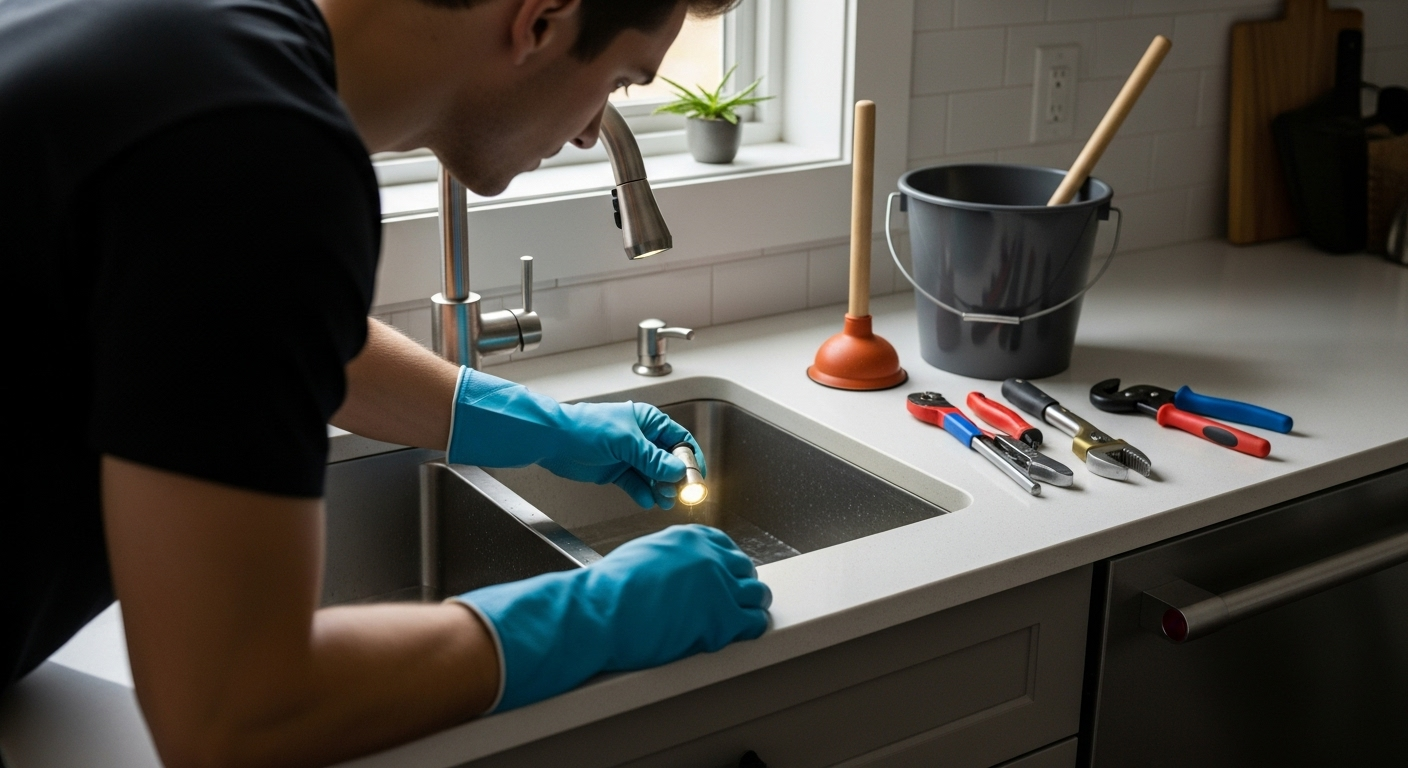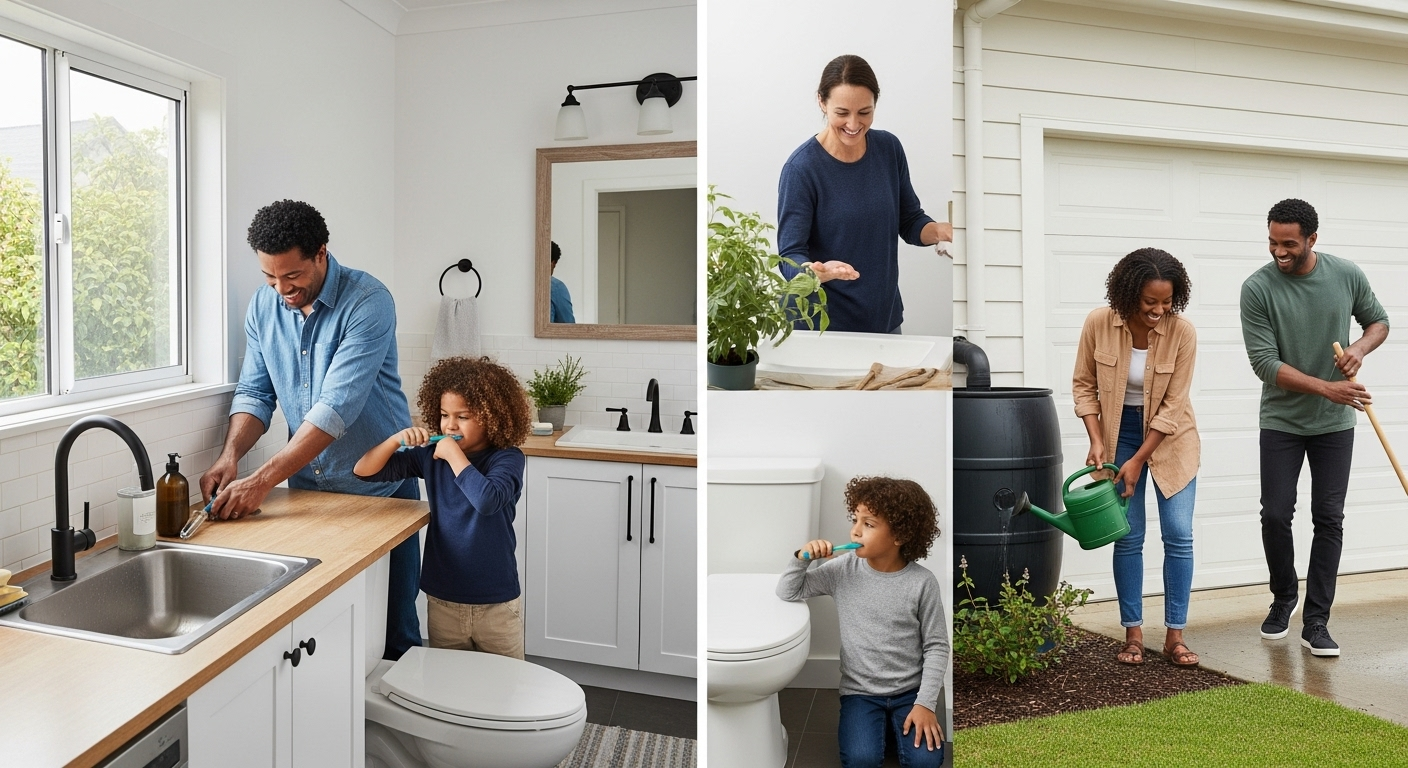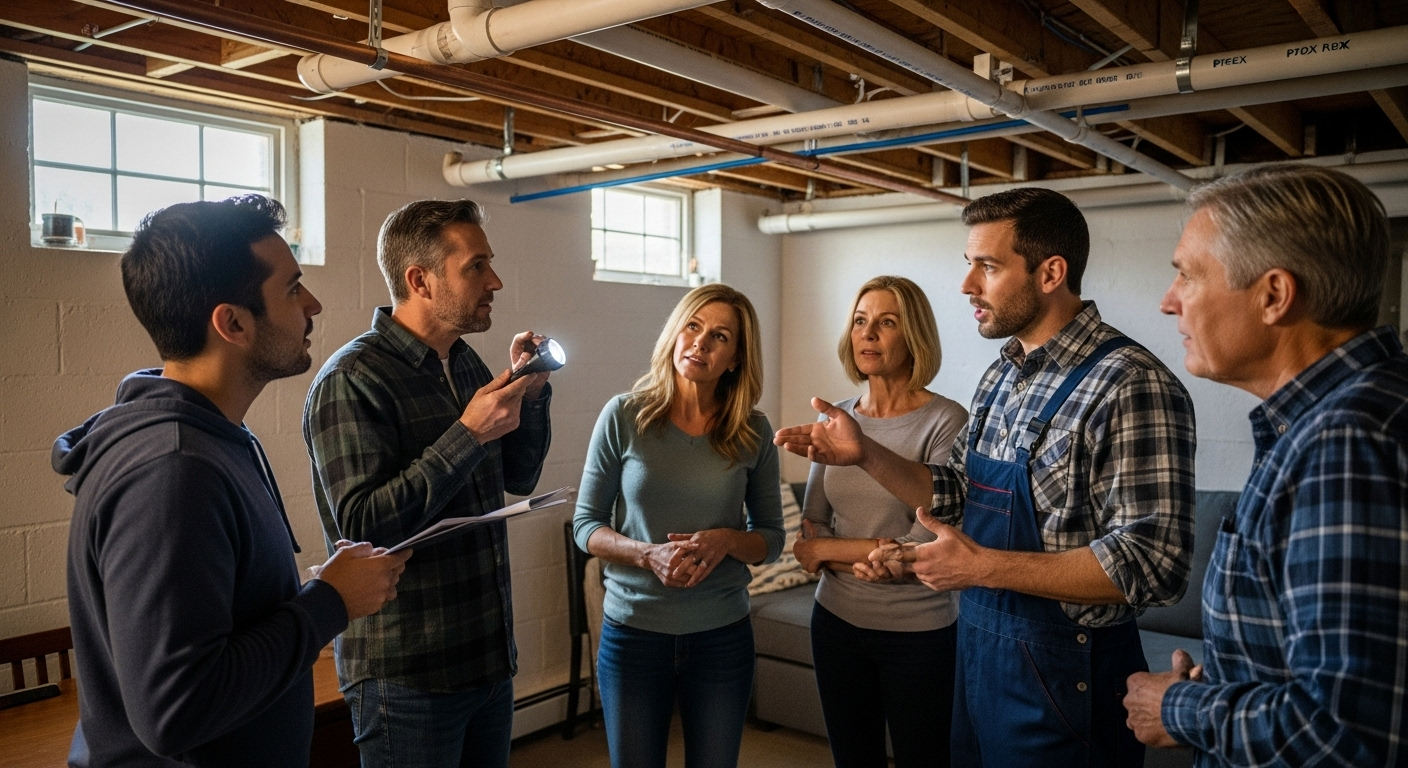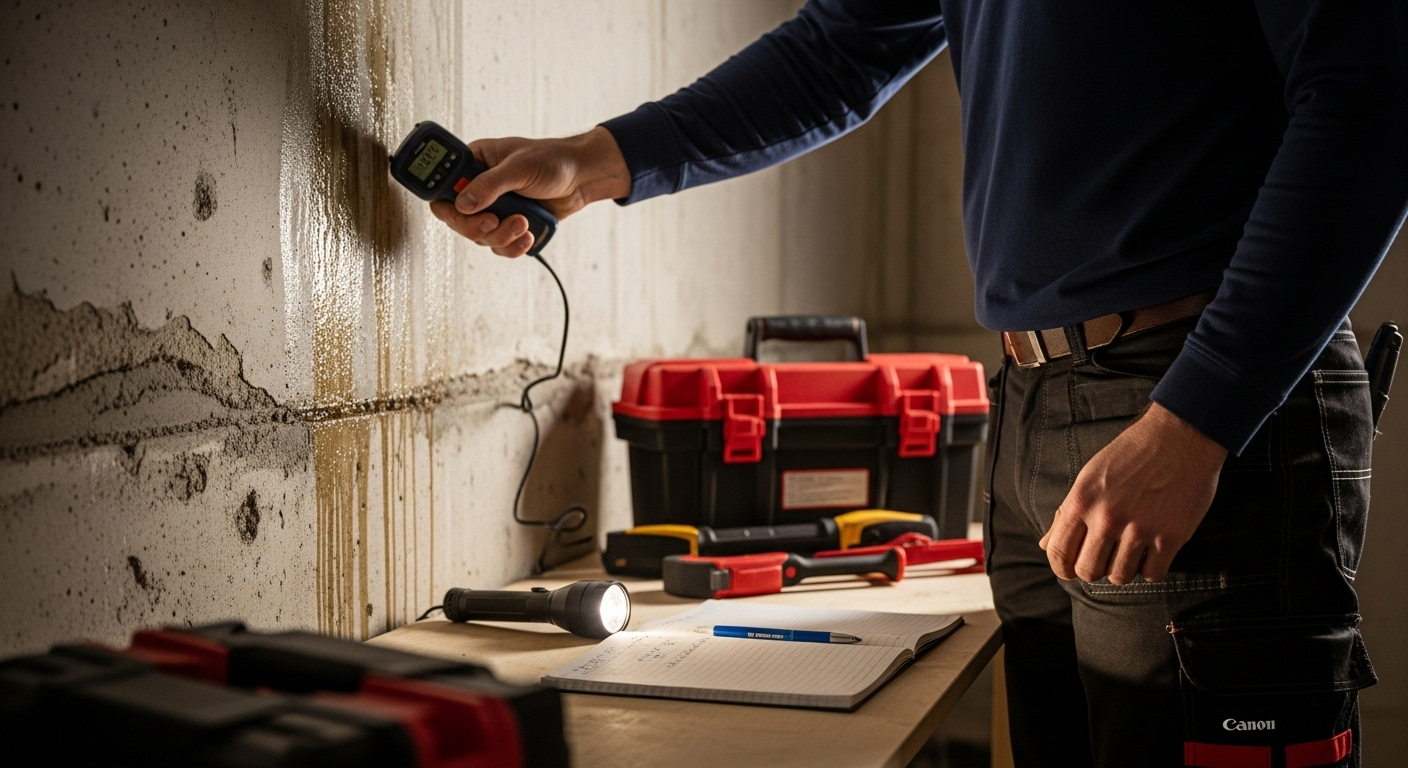Understanding Household Water Pressure and Its Importance

Water coming out of your faucet seems simple enough, but behind every shower and running sink is a hidden force shaping your daily comfort. Most homes run best with pressure around 50 to 60 PSI , and dips or spikes outside this can cause all sorts of headaches. The real surprise? Too much pressure does not mean a better shower. It can silently damage pipes, wear out appliances, and leave you with unexpected repair bills.
Table of Contents
Quick Summary
| Takeaway | Explanation |
|---|---|
| Water Pressure Ranges Matter | Residential water pressure should ideally be between 50 to 60 PSI for optimal performance. |
| Low Pressure Indicates Issues | Low water pressure may signal blockages or deterioration in your plumbing system. |
| High Pressure Risks Damage | Excessively high water pressure can strain pipes, leading to leaks and rapid wear on fixtures. |
| Regular Monitoring is Essential | Consistent measurement of water pressure can help catch problems early and prevent costly repairs. |
| Install Pressure-Reducing Valves | These devices stabilize incoming municipal water pressure, ensuring comfort and protecting plumbing infrastructure. |
What is Household Water Pressure?
Household water pressure represents the force that propels water through your home’s plumbing system, determining how effectively water flows from faucets, showers, and appliances. This crucial element of residential infrastructure impacts everything from daily water usage to the performance of household equipment.
Understanding the Basics of Water Pressure
Water pressure is measured in pounds per square inch (PSI), typically ranging between 40 to 80 PSI for residential properties. Most homes function optimally with water pressure around 50 to 60 PSI. When water pressure falls outside this range, homeowners may experience significant challenges with their plumbing system.
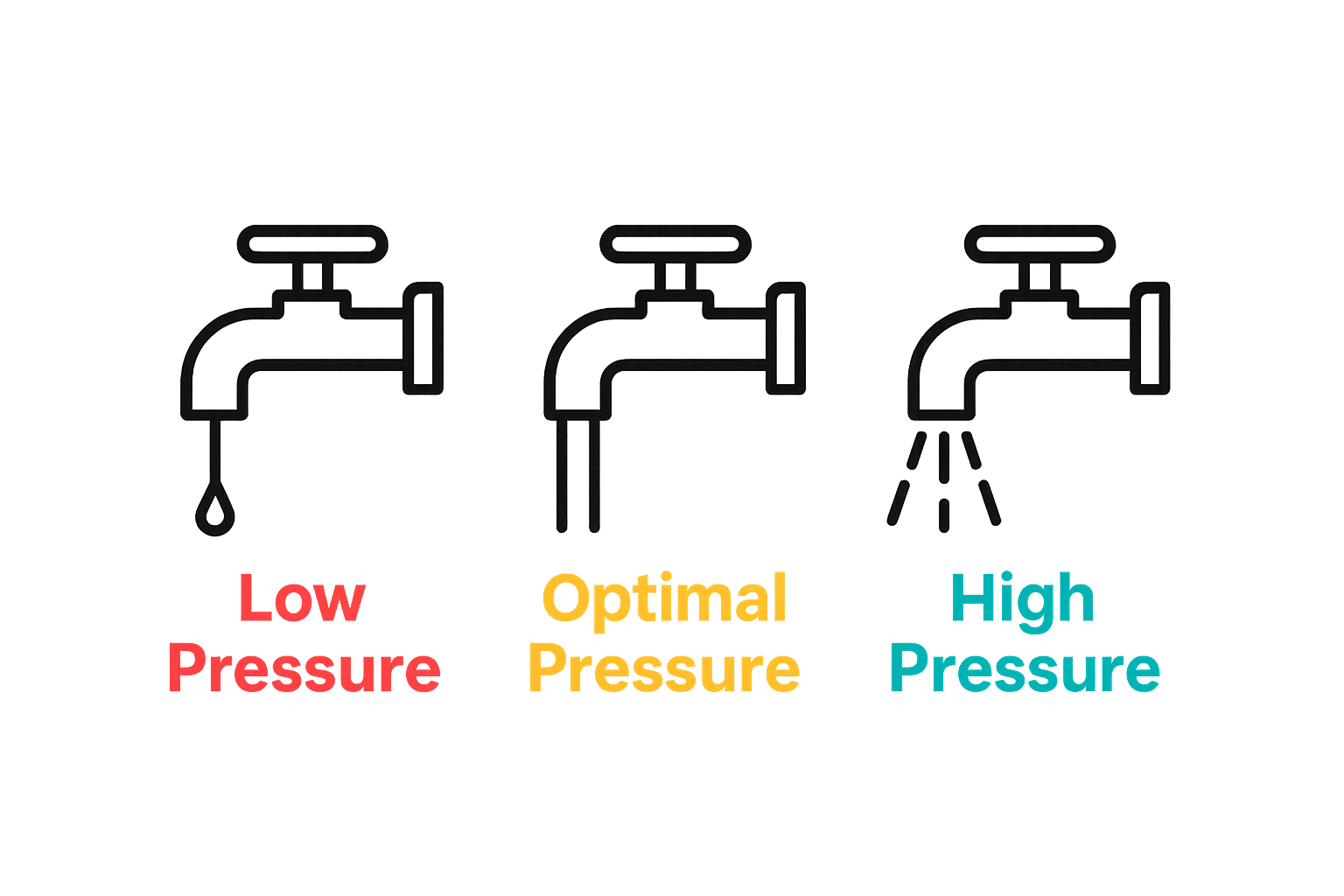
Key Characteristics of Water Pressure :
- Regulated by municipal water supply systems
- Influenced by elevation, pipe diameter, and distance from water source
- Can be affected by internal home plumbing conditions
Factors Affecting Household Water Pressure
Multiple elements impact your home’s water pressure. Pipe age, diameter, and potential blockages can significantly reduce water flow. Older homes with original plumbing might experience lower pressure due to mineral buildup, corrosion, or narrowed pipe passages. Geographic location and municipal infrastructure also play critical roles in determining consistent water pressure.
Homeowners should understand that water pressure is not just about water volume, but about the force pushing water through pipes. Low pressure can result in weak shower streams, slow-filling washing machines, and inefficient appliance performance. Conversely, excessively high pressure can stress plumbing systems, potentially causing pipe damage, leaks, and premature wear on household fixtures.
Recognizing and maintaining appropriate water pressure is essential for protecting your home’s plumbing infrastructure and ensuring comfortable, efficient water usage across all household systems.
To help clarify the distinct impacts of low, normal, and high water pressure on your home, the following table summarizes their effects as discussed in the article.
| Water Pressure Level | Typical PSI Range | Common Effects on Home |
|---|---|---|
| Low Pressure | Below 40 PSI | Weak flow from taps, slow appliance fill, possible blockages or pipe deterioration |
| Normal (Optimal) | 50–60 PSI | Comfortable showers, efficient appliances, balanced plumbing system |
| High Pressure | Above 80 PSI | Pipe stress, leaks, accelerated fixture and appliance wear, risk of structural damage |
Why Household Water Pressure Matters for Your Home
Household water pressure plays a critical role in maintaining the comfort, functionality, and longevity of your home’s plumbing system. Understanding its significance helps homeowners prevent potential issues and ensure optimal performance of water-dependent appliances and fixtures.
Impact on Daily Home Functionality
Water pressure directly influences how effectively water flows through your home. Inadequate pressure can transform routine tasks into frustrating experiences. Imagine attempting to shower with a weak stream, waiting minutes for a washing machine to fill, or struggling to rinse dishes with minimal water flow. These scenarios highlight why consistent water pressure is more than a convenience it is a necessity for comfortable living.
Critical Home Systems Affected by Water Pressure :
- Kitchen appliances requiring consistent water supply
- Bathroom fixtures like showers and toilets
- Laundry equipment performance
- Outdoor irrigation systems
Potential Risks of Improper Water Pressure
Both low and high water pressure can cause significant problems for your home’s plumbing infrastructure. Low pressure might indicate underlying issues such as pipe blockages, leaks, or system deterioration. Conversely, excessively high pressure can stress pipes, leading to potential damage, increased wear on fixtures, and unexpected leaks.
Municipal water systems typically maintain pressure between 40 to 80 PSI, with optimal residential performance around 50 to 60 PSI. Deviations from this range can trigger a cascade of plumbing challenges. Homeowners should monitor their water pressure regularly and address any fluctuations promptly to prevent costly repairs.
learn more about protecting your home’s plumbing system and understand how consistent water pressure contributes to long-term home maintenance and efficiency.
How Household Water Pressure Affects Plumbing Systems
Household water pressure profoundly influences the performance, durability, and reliability of residential plumbing infrastructure. Understanding the intricate relationship between water pressure and plumbing systems helps homeowners protect their property and prevent costly potential damages.
Pipe Stress and Structural Integrity
Water pressure acts as a continuous force within your home’s plumbing network, creating substantial stress on pipes, joints, and connections. Excessive pressure can compromise pipe structural integrity, causing microscopic weaknesses that gradually develop into significant problems. Pipes experience constant expansion and contraction, and inappropriate pressure levels accelerate material fatigue.
Key Plumbing System Vulnerabilities :
- Pipe joint connections
- Fixture attachment points
- Older pipe materials with reduced structural resilience
- Potential weak points in pipe network
Cascading Effects on Plumbing Components
Fluctuations in water pressure create ripple effects throughout your home’s plumbing ecosystem. Low pressure might indicate underlying issues like pipe blockages or leaks, while high pressure can damage fixtures, appliances, and internal mechanisms. Water-dependent equipment such as dishwashers, washing machines, and water heaters become particularly vulnerable to pressure inconsistencies.
check out our comprehensive plumbing troubleshooting guide to understand how water pressure impacts various household systems. Consistent monitoring and proactive maintenance can significantly extend the lifespan of your plumbing infrastructure and prevent unexpected breakdowns.
Homeowners should recognize that water pressure is not merely a technical metric but a critical factor in maintaining a functional, efficient home.
The table below outlines household plumbing system components and describes their vulnerabilities in relation to different water pressure scenarios as explained in the article.
| Plumbing Component | Vulnerability Under High Pressure | Vulnerability Under Low Pressure |
|---|---|---|
| Pipe Joints & Connections | Leaks, weakening, potential bursts | Not typically affected |
| Fixture Attachment Points | Increased leaks, rapid wear | Dripping, poor function |
| Older Pipes/Materials | Structural fatigue, cracking, failures | Increased risk of blockages due to deposits |
| Household Appliances | Internal damage, shortened lifespan | Inefficient operation, incomplete cycles |
| Water-Dependent Equipment | Malfunctions, costly repairs | Inefficient performance, delays |
| Professional assessment and periodic pressure testing can help identify potential issues before they escalate into major repairs, saving time, money, and potential property damage. |
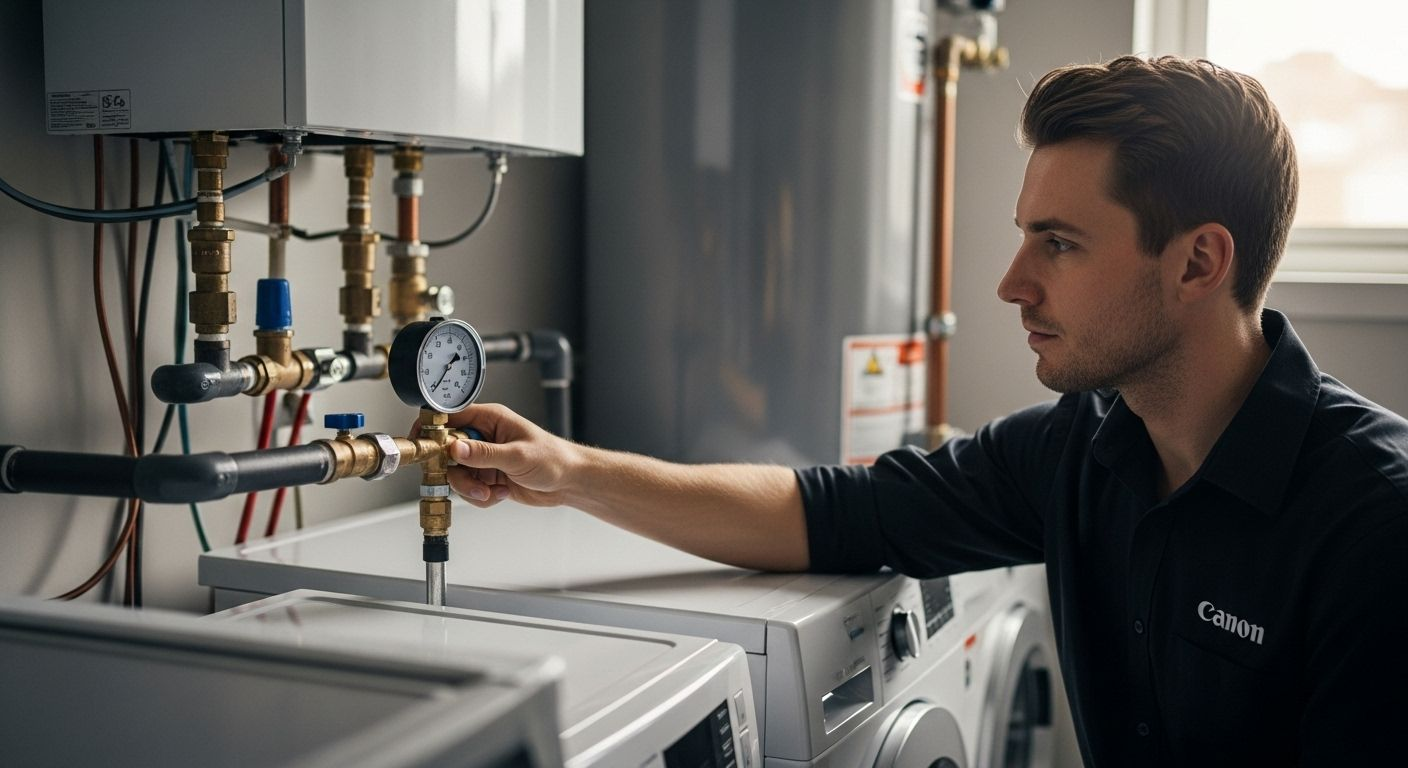
Key Concepts of Household Water Pressure Management
Managing household water pressure requires a strategic approach that balances technical understanding with proactive maintenance. Homeowners must develop a comprehensive strategy to monitor, control, and optimize their home’s water pressure system to prevent potential infrastructure damage and ensure consistent performance.
Understanding Pressure Measurement and Monitoring
Water pressure measurement involves using specialized tools to assess the force moving water through residential plumbing systems. Standard residential water pressure typically ranges between 40 to 80 pounds per square inch (PSI), with optimal performance occurring around 50 to 60 PSI. Professional-grade pressure gauges can help homeowners accurately diagnose potential issues and track pressure fluctuations over time.
Essential Pressure Monitoring Tools :
- Digital pressure testing devices
- Analog pressure gauges
- Whole-home pressure monitoring systems
- Pressure-reducing valves with integrated measurement capabilities
Strategic Pressure Management Techniques
Effective water pressure management involves multiple strategic interventions. Homeowners can install pressure-reducing valves to stabilize incoming municipal water pressure, preventing excessive stress on pipes and fixtures. Regular maintenance, including pipe inspections and cleaning, helps maintain consistent pressure by eliminating potential blockages that might cause pressure variations.
explore our comprehensive plumbing maintenance strategies to understand how professional interventions can protect your home’s water infrastructure. Proactive management not only extends the lifespan of your plumbing system but also ensures reliable water delivery throughout your home.
Ultimately, household water pressure management is about creating a balanced, efficient system that protects your property while delivering consistent water performance. By understanding the technical principles and investing in regular monitoring, homeowners can prevent costly repairs and maintain their plumbing infrastructure’s long-term health.
Take Control of Your Home’s Water Pressure With Trusted Experts
Struggling with unpredictable or weak water pressure is not just inconvenient—it can signal serious risks for your home’s plumbing health. As highlighted throughout this article, issues like low or fluctuating water pressure may be early warnings of leaks, aging pipes, or even hidden blockages. Ignoring these symptoms can lead to expensive repairs and long-term damage to your plumbing infrastructure.
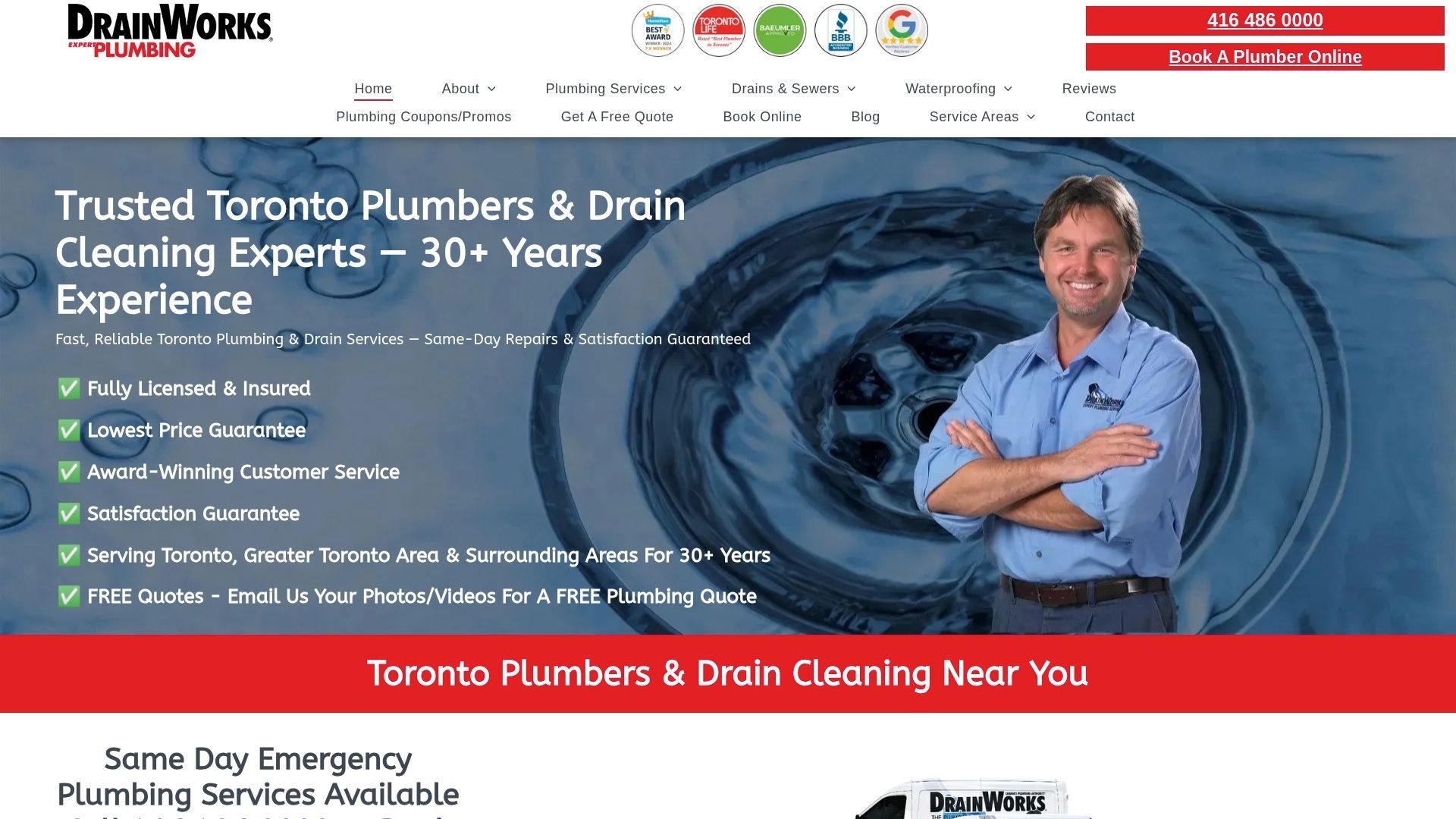
Experience peace of mind and comfort with DrainWorks Plumbing—Toronto’s trusted specialists with over 30 years of residential expertise. Whether you need professional diagnosis, lasting repairs, or expert plumbing troubleshooting , our licensed team is here to help you resolve water pressure concerns for good. Visit DrainWorks Plumbing today to book your same-day service and protect your home from hidden plumbing issues. Don’t wait for a small problem to become a major headache—act now for reliable water pressure and complete plumbing confidence.
Frequently Asked Questions
What is considered normal household water pressure?
Normal household water pressure typically ranges between 40 to 80 pounds per square inch (PSI), with optimal performance occurring around 50 to 60 PSI.
How can I check my household water pressure?
You can check your household water pressure using a pressure gauge, which can be attached to an outdoor faucet or the water supply pipe. Digital or analog gauges are both effective for measuring PSI.
What are the signs of low water pressure in a home?
Signs of low water pressure include weak flow from faucets and showers, prolonged washing machine fill times, and difficulty in operating appliances that rely on water.
Can high water pressure damage my plumbing system?
Yes, excessively high water pressure can stress pipes and connections, leading to leaks, burst pipes, and increased wear on fixtures and appliances. It’s important to manage water pressure to prevent these issues.



